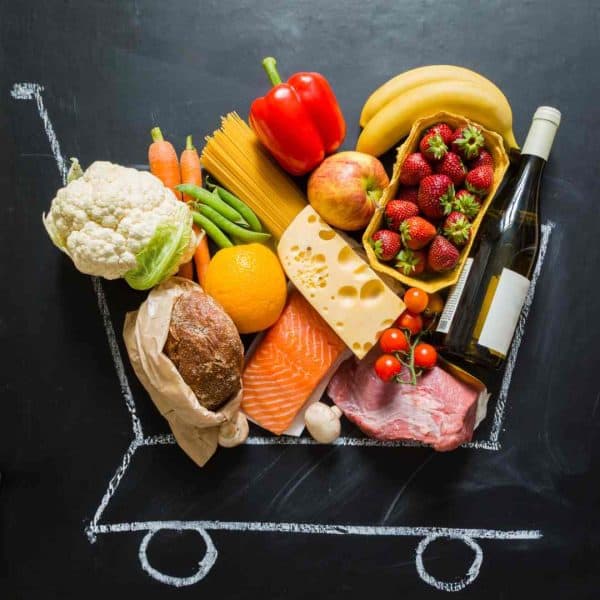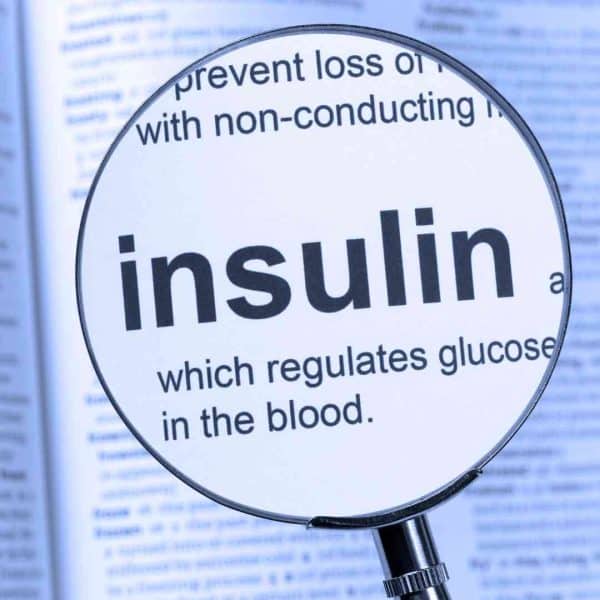
Toxic chemicals intended to kill pests and other organisms are sprayed on a large percentage of the produce sold in grocery stores. Pesticides linger on food even after washing, invading our diets and bodies.
Needless to say, ingesting toxic chemicals is harmful for both your health and your bones.
The Environmental Working Group publishes two annual lists to help us decide what conventionally grown (non-organic) produce to avoid and which is more likely to be safe to eat.
In this article, we'll review the 2025 Dirty Dozen and Clean Fifteen lists, including the newest addition to the Dirty Dozen; it's the most consumed vegetable in the United States, now confirmed as one of the dirtiest.
The Environmental Working Group Shopper's Guide
The Environmental Working Group (EWG) creates a shopper's guide each year, based on their analysis of testing carried out by the Department of Agriculture’s Pesticide Data Program. Each year, the USDA tests thousands of fresh fruit and vegetable samples for pesticide residues.
The EWG analyzes the results from the most recent tests of each type of produce and ranks commonplace fruits and vegetables based on their levels of pesticide contamination and the toxicity of the pesticides detected.
It's important to note that the USDA conducts its testing on produce prepared as it would be at home. Their researchers wash the samples under running water for about 15 to 20 seconds, and peel them when applicable, before testing for residual chemicals.
The EWG's shoppers' guide includes two lists: the Dirty Dozen and the Clean Fifteen. Each is a valuable resource for Savers to avoid acidifying and toxic chemical residues.1
Synopsis
The Environmental Working Group (EWG) analyzes data from the USDA's Pesticide Data Program to create a shopper's guide to help you avoid the conventionally grown produce most laden with toxic pesticides. The USDA tests produce after washing or peeling the items, just as you would at home.
Eat Your Way to Stronger Bones
Enjoy 200+ delicious, bone-strengthening recipes designed to naturally support bone health—without spending hours in the kitchen. Bone Appétit makes eating for stronger bones simple, satisfying, and stress-free.

The 2025 Dirty Dozen
The Dirty Dozen are the twelve produce items that were found to be the most contaminated with pesticides. For 2025, the list includes:
- Spinach*
- Strawberries*
- Kale, Collard, and Mustard Greens*
- Grapes*
- Peaches*
- Cherries*
- Nectarines
- Pears*
- Apples*
- Blackberries*
- Blueberries*
- Potatoes
*Denotes Foundation Food
This is the first year that potatoes have made the Dirty Dozen. USDA testing found that potatoes had high concentrations of chlorpropham, a plant growth regulator banned in the European Union due to health concerns. This is especially concerning because potatoes are the most consumed vegetable in the United States.
The USDA collected and tested more than 1,000 samples of potatoes. The samples were washed and scrubbed before being tested for pesticide residues. Ninety percent of the samples contained chlorpropham.
Chlorpropham was once approved for use in the EU, but regulators reassessed its risks and rescinded approval in 2019.. A 2017 risk assessment found that people who ate produce sprayed with chlorpropham were exposed to the chemical and its breakdown product 3-chloroaniline at harmful levels. The report emphasized the need for further study of the potential endocrine-disrupting effects of the pesticide.2
The primary toxicological effects of chlorpropham exposure include changes in blood cells and damage to the thyroid, according to animal studies considered by health agencies in the US and EU.
In addition to their pesticide load, potatoes are increasingly genetically modified. The Save Institute recommends avoiding genetically modified organisms (GMOs). GMO labeling can be difficult to decipher, so look for produce marked organic and certified non-GMO.
Even organic potatoes sometimes contain cross-contamination from non-organic potatoes, so it's important to wash and scrub potatoes before cooking and eating them.
Non-organic sweet potatoes are not sprayed with chlorpropham, and the EWG ranks them just two spots shy in the Clean Fifteen list in their full list of residual pesticide levels. Just under 60% of sweet potato samples tested by the USDA contained pesticide residues, compared to 94% of regular potato samples. Additionally, the toxicity of the pesticides detected on sweet potatoes was lower than the toxicity of the pesticides found on potatoes. This makes sweet potatoes an excellent alternative for reducing your exposure to toxins.
Synopsis
The 12 produce items listed above contained the most and the most toxic pesticide residue in the USDA's testing. This year marks the first appearance of potatoes on the list. They are sprayed with chlorpropham, a pesticide banned in the EU, and found to damage the thyroid and blood vessels in animal studies.
The 2025 Clean Fifteen
On the other end of the EWG Shopper's Guide list are the conventionally grown foods that bear the lowest volume and number of toxic pesticides. You may be surprised to learn that sweet corn ranks second on the list. Even though genetically modified (GMO) sweet corn introduced in 2011 by Monsanto was engineered to resist weed killers such as glyphosate – the active ingredient in Roundup – it generally has low pesticide residue. Studies have linked GMO consumption to kidney and liver damage, among other health concerns, so it’s best to avoid them whenever possible to protect your bones and overall health.
The 2025 Clean Fifteen, starting with the cleanest item at number one, are:
- Pineapple*
- Sweet corn (fresh or frozen)
- Avocado*
- Papaya*
- Onion*
- Sweet peas* (frozen)
- Asparagus*
- Cabbage*
- Watermelon*
- Cauliflower*
- Bananas*
- Mangoes
- Carrots*
- Mushrooms*
- Kiwi*
*Denotes Foundation Food
The Clean Fifteen represent the conventional produce items with the least pesticide contamination. If organic produce isn’t available, these items are the safest conventional choices, except for sweet corn, which should be organic to avoid GMOs.
The EWG doesn't recommend avoiding Dirty Dozen items entirely, as eating a diet rich in fruits and vegetables remains as an important dietary goal. However, avoid buying conventionally grown items on the Dirty Dozen list whenever you have other options for fruits and vegetables. Remember to thoroughly rinse all the produce you eat, and if you can't get organic, choose items on the Clean Fifteen list.
The Save Institute echoes this advice. Pesticides, in addition to their other health detriments, contribute to dietary acid load, which impedes healthy bone remodeling, causing bone loss.
Synopsis
The Clean Fifteen, listed above, represent the conventional produce items with the least pesticide contamination– choose them whenever organic produce is unavailable.
What This Means To You
Every time you go to the grocery store, you make decisions that impact your health and your bones. Use the Environmental Working Group's shopping guide to make smarter choices about the pesticide levels of the produce you buy and eat.
Whether you're buying organically grown items on the Dirty Dozen list or choosing from the Clean Fifteen when organic veggies aren't available, you can turn to Bone Appétit for recipes that transform your fresh groceries into delicious and healthy dishes.
Bone Appétit contains more than 200 recipes featuring all of the Foundation Foods and many additional delicious and healthy ingredients, including the items on EWG's shopping guide.
Choose a diet that supports bone health, minimizes exposure to toxic chemicals, and brings the joy and satisfaction of eating wholesome, delicious food.
Delicious, Bone-Healthy Meals Made Simple
Support your bones with 200+ easy, flavorful recipes designed to naturally boost bone strength—without spending hours in the kitchen. Bone Appétit takes the guesswork out of eating for bone health, so you can enjoy every meal with confidence.

References
1 https://www.ewg.org/foodnews/full-list.php
2 https://efsa.onlinelibrary.wiley.com/doi/epdf/10.2903/j.efsa.2017.4903



Vivian, Thank you so much for the article about our potatoes being sprayed with pesticides! Regardless of the harm it’s doing to people! It angers me that our food supply has been so contaminated! Most all of us eat potatoes and had no idea that they are eating poison, chlorpropham! Thanks for giving us this info, Vivian!!!
This is totally off subject. A nutritionist told my neighbor that she must drink raw milk from a reputable farm 3 times a day for her Osteopenia.
We grow our own. Just made some pickles from our cukes!
When Americans go and live somewhere in Europe, they find that many of their health issues clear up and no matter how much or what they eat, they will lose weight. This is probably also due to the many additives in US processed foods that have been banned elsewhere.
True. In fact, the European Union (EU) is generally considered to have more stringent food safety regulations compared to the United States. The EU employs a precautionary principle, meaning potential risks are addressed proactively, and products may be banned or restricted until proven safe. The EU also has comprehensive labeling requirements and stricter limits on pesticide residues than the US.
I would like to encourage everyone to always buy organic. I have seen the terrible effects of chemicals applied to avocado fields. Not only do they destroy healthy soil, the chemicals also run off into the water, causing dead lakes.
Those conventionally grown avocados may not harm us, but they do harm other living things and whole ecosystems.
Well said, Sarah!
Just don’t forget about this as he’s talking about spraying organic fruit again with Apeel!: https://wltreport.com/2025/07/28/bill-gates-frustrated-natural-health-world-not-taking/
Thanks for sharing this information.
Hi I’m in Australia, so wondering how relevant the sprays used in the US are to here, as we have different regulations …
Good question, Penny! The main government agency responsible for regulating pesticides in Australia is the Australian Pesticides and Veterinary Medicines Authority (APVMA). In addition to the APVMA, Food Standards Australia New Zealand (FSANZ) also plays a role in setting maximum residue limits for chemicals in food. So the above list does not apply to the produce sold in Australia.